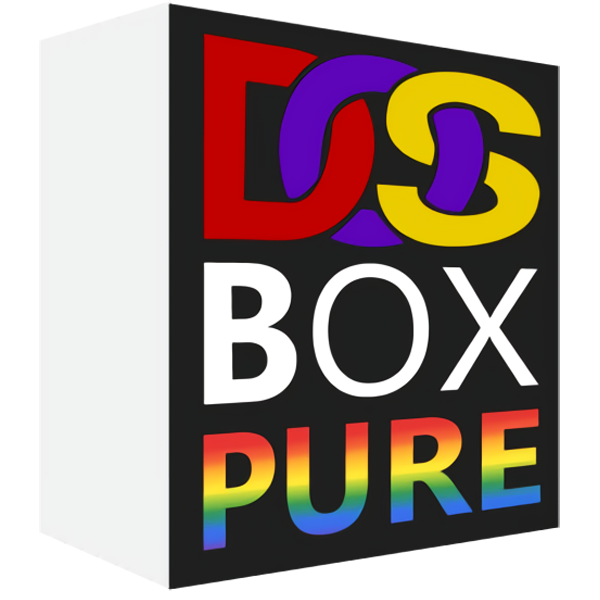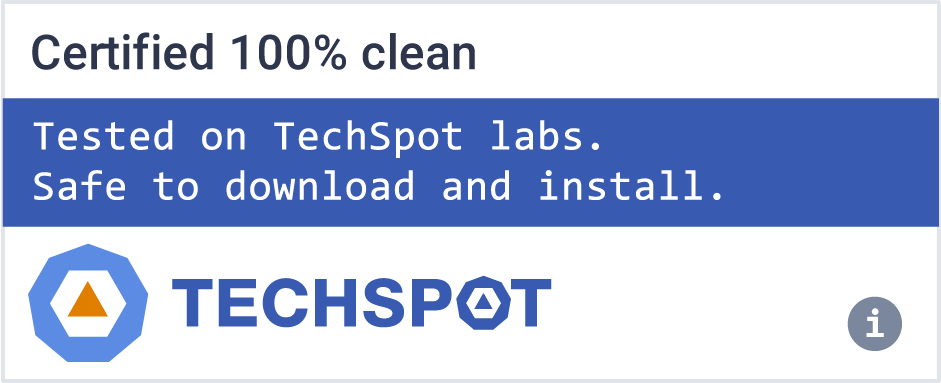DOSBox Pure can load games directly from ZIP files without the need to extract them, and much more.
Store modifications in separate save files
Changes made to a loaded ZIP file will be stored as a separate ZIP file into the libretro saves directory.
If a game is loaded directly without using a ZIP file the saves directory is not used.
Mount disc images from inside ZIP files
CD images (ISO or CUE) and floppy disk images (IMG/IMA/VHD) can be mounted directly from inside ZIP files.
The system will automatically mount the first found disk image as the A: or D: drive.
Additional disks can be loaded or swapped by using the Disc Control menu in RetroArch.
The start menu also offers the option to mount or unmount an image.
Start menu with auto start
This is the first screen that appears when loading a game. It offers a gamepad controllable list of all executable files for the loaded game. By pressing right an item can be selected as the default which will skip the menu on the next launch. By pressing right multiple times, a number of frames can be specified that will automatically be skipped on start. This can be used to skip over loading screens or start-up sequences.
If there is only a single executable, the menu will not show and directly run the file. To force the menu to be shown, hold shift on the keyboard or L2 or R2 on the gamepad while selecting Restart in the core menu.
Automated controller mappings
When a game is loaded, DOSBox Pure will try to detect the game and apply a controller mapping.
To see the applied mapping, check the Port 1 Controls screen in the RetroArch menu. It will show Detected Automatic Key Mapping:
Mouse emulation
Under the Controls screen in the RetroArch menu there are 2 mouse emulation modes available by switching the Device Type setting of any port with left/right. There is Mouse with Left Analog Stick and Mouse with Right Analog Stick.
When choosing left stick, the face buttons (B/A) will be used as left/right mouse buttons.
For the right stick the shoulder buttons L/R will be used as left/right mouse buttons.
The X button is the middle mouse button and L2/R2 can be used to speed up or slow down mouse movement.
There is also the core option Input > Mouse Sensitivity to increase/decrease mouse movement speed.
Keyboard emulation
For games that don't have automated controller mappings or are not detected successfully, by default the option Input > Bind Unused Buttons will assign all unused buttons on the game pad with some default key.
If the Device Type under the Controls screen in the RetroArch menu of any port is set to Generic Keyboard Bindings all buttons will be assigned with a keyboard key. Additionally it can be set to Custom Keyboard Bindings which will allow fully customizable mappings.
Joystick emulation
There are multiple DOS era joysticks available as mappings under the Controls screen in the RetroArch menu.
Gravis GamePad (1 D-Pad, 4 Buttons), Basic joystick (2 Axes, 2 Buttons), ThrustMaster Flight Stick (3 axes, 4 buttons, 1 hat) and Control both DOS joysticks (4 axes, 4 buttons).
These can be assigned to any port and the button layout can be remapped as with any other device type.
On-screen keyboard
By pressing L3 on the gamepad (usually by pushing in the left analog stick) the on-screen keyboard will open. The cursor can be controlled with the controller (or mouse or keyboard) and L2/R2 will speed up or slow down the move speed.
If the cursor is moved above the middle of the screen the keyboard will move to the top. The button can be remapped in the controls menu and there is also a core options to disable it entirely.
MIDI playback with SoundFonts
If DOSBox Pure finds one or more .SF2 sound font file in the system directory of the frontend, one of them can be selected via the Audio > MIDI SoundFont core option.
This sound font will then be used to play General Midi and Sound Canvas music.
Cheats support
DOSBox Pure exposes its memory for cheats in the libretro frontend.
For details how to use it and how to find new cheats while playing the game, check the documentation on the RetroArch website.
This can also be used to add controller rumble support to DOS games.
Save states
The DOSBox Pure core fully supports libretro save states.
Make sure to test it in each game before using it. Complex late era DOS games might have problems.
Be aware that states saved with different video or cpu settings are not loadable.
Save states might not be compatible across different versions of DOSBox Pure.
Rewind support
Using the core option Save States Support, rewinding can be enabled.
Keep in mind that rewind support comes at a high performance cost.
Loading M3U8 files
If the core gets loaded with a .m3u8 file, all files listed in it will be added to the disc swap menu. The first image will automatically get mounted as A: or D: drive depending if it is a CD or floppy disk image.
What's New
This is the seventh beta release of DOSBox Pure.
Changes in 0.9.7:
- Don't stop emulation on failed FPU push check to help running installed operating systems on non-Intel platforms (#282)
- Add larger Hard Disk sizes for OS install (up to 64 GB) (#280)
- Add core option to customize amount of free space on D: drive when running an installed operating system (#296)
- First attempt to satisfy CD copy protection schemes of some Windows games (#295)
- Mount custom IMG file as D: drive in installed operating system (#290)
- Fix crash when system directory is read-only (show error notification instead) (#293)
- Incorporate DOSBox upstream changes (Merge revisions 4475 ~ 4480)

